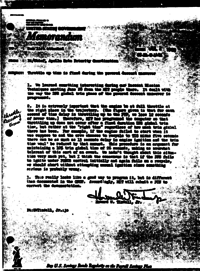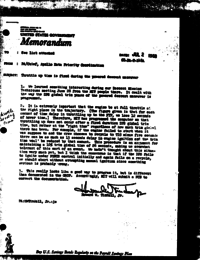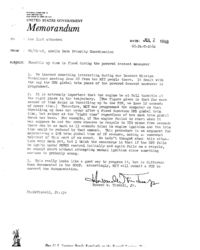See list attachedJUL 2 196868-PA-T-148APA/Chief, Apollo Data Priority CoordinationThrottle up time is fixed during the powered descent maneuver
1. We learned something interesting during our Descent Mission Techniques meeting June 28 from the MIT people there. It dealt with the way the DPS gimbal trim phase of the powered descent maneuver is programmed.
2 . It is extremely important that the engine be at full throttle at the right place in the trajectory. (The figure given is that for each second of time delay in throttling up to the FTP, we lose 12 seconds of hover time.) Therefore, MIT has programmed the computer so that throttling up does not occur after a fixed duration DPS gimbal trim time, but rather at the “right time” regardless of how much trim gimbal there has been. For example, if the engine failed to start when it was suppose to and the crew chooses to recycle to TIG minus five seconds there can be as much as 13 seconds delay in engine ignition and the trim time would be reduced by that amount. This procedure is an argument for maintaining a 10% trim gimbal time of 26 seconds, making us somewhat tolerant of this sort of an event. We hadn't thought about this situa- tion very much yet, but I think the consensus is that if the DPS fails to ignite under PGNCS control initially and again fails on a recycle, we should abort without attempting manual ignition since something serious is probably wrong.
3 . This really looks like a good way to program it, but is different than documented in the GSOP. Accordingly, MIT will submit a PCN to correct the documentation.
- Jul 17, 1968 – Powered descent throttle logic correction (11.2σ)
- Oct 18, 1967 – Some things about the Descent Propulsion system as controlled by the LGC (3.5σ)



